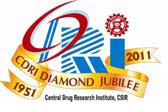 About Authors:
About Authors:
Patel Chirag J*1, Prof. Satyanand Tyagi2, Patel Pinkesh1, Umesh Kumar1, Patel Jaimin1, Chaudhari Bharat1
1Department of Pharmaceutics, Maharishi Arvind Institute of Pharmacy, Mansarovar, Jaipur, Rajasthan, India-302020.
*Mr. Chirag Patel has published various Books, Research and Review articles. His academic works include 35 Publications (2 books was published in Lambert Academic Publishing, Germany & 8 Research Articles and 25 Review Articles was published in standard and reputed National and International Pharmacy journals)
2President & Founder, Tyagi Pharmacy Association (TPA) & Scientific Writer (Pharmacy), Chattarpur, New Delhi, India-110074.
*chirag.bangalore@gmail.com, +91-8000501871
ABSTRACT:
The transdermal route of drug delivery has gained great interest of pharmaceutical research, as it circumvents number of problems associated with oral route of drug administration. Recently, various strategies have been used to augment the transdermal delivery of bioactives. Mainly, they include electrophoresis, iontophoresis, chemical permeation enhancers, microneedles, sonophoresis, and vesicular system like liposomes, niosomes, elastic liposomes such as ethosomes and transfersomes. Among these strategies transferosomes appear promising. A novel vesicular drug carrier system called transfersomes, which is composed of phospholipid, surfactant, and water for enhanced transdermal delivery. Transfersomes are a form of elastic or deformable vesicle, which were first introduced in the early 1990s.The system can be characterized by in vitro for vesicle shape and size, entrapment efficiency, degree of deformability, number of vesicles per cubic mm. These carriers can transport pharmacological agents, including large polypeptides, through the permeability barriers, such as the intact skin.
IITB, set up by an Act of Parliament, was established in 1958, at Powai, a northern suburb of Mumbai. Today the Institute is recognised as one of the centres of academic excellence in the country.



 About Authors:
About Authors:  About Authors:
About Authors:  About Authors:
About Authors: About Authors:
About Authors: About Authors:
About Authors: 









